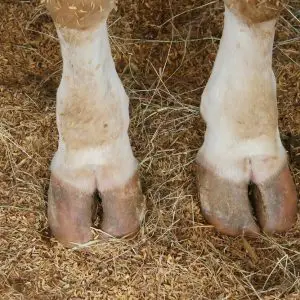Are you looking for a healthy and natural treat for your dog? Maybe you’d like something versatile which can be used in many different ways? Or maybe you’d like a treat with added health benefits? Well, sprats might be an option for you and your dog!
But what are sprats? Where do they come from? And what are their benefits? These are some of the questions you might be searching for answers for, which we will discuss within this article.
Key facts
Give sprats a go if you’re looking for a natural, healthy treat for your dog
Try to source them from a supplier with high standards, where the fish were sustainably caught and handled hygienically
Use them as a food topper, training treat, exploring game or simply as a daily snack
What are Sprats for Dogs?
Sprats are small fish (6 to 8cm long) which have been prepared for your dog to eat. They can be fished in many different places in the world, however the Baltic Sea is a common source for European produced sprats.
They are available in a variety of forms to suit your needs, such as frozen, air-dried and minced.
Air-Dried Sprats
Possibly the most popular form of sprats for dogs. They are gently dried without heat to create a crunchy, crumbly treat for your dog. They are easy to break through and one sprat can be easily broken into four little sections to use as a training treat. You can also sprinkle some broken up sprats across your garden as a fun, mind challenging game.
Frozen Sprats
These are an excellent option to add to your dog’s raw food diet, or as a completely unprocessed treat (as long as your dog eats it quickly, otherwise you have a defrosted whole fish on your living room floor!).
Minced Sprats
These can also be used as a complement to meals, and you can sprinkle them over your dog’s raw or commercial food to ensure he gets the added health benefits from having them in his diet.
Benefits of Sprats for Dogs
Sprats have a wealth of health benefits for your dog which include:
- Boosting and maintaining heart function.
- Improving the glossiness of the coat.
- Decreasing itchiness and dryness of the skin.
- Decrease inflammatory processes such as allergies.
- Improve joint health and provide arthritic pain relief.
All of these benefits can be attributed to their high omega-3 content. Omega-3 is an essential fatty acid, which dogs cannot make and must obtain from their food. It is vital for many bodily functions, and a key nutrient for your dog’s diet.
Sprats are nutritionally made up of more than Omega-3 though. Their nutritional constitution varies depending on the type of sprats.
Nutrition
This means that you are giving your dog far more moisture (water) if you feed frozen sprats, and will need to feed many more to feed the same amount of protein and fat as if you were giving dried sprats. But this isn’t necessarily a bad thing, as even though the nutrients are more concentrated in dried sprats, you might want a low-fat option, in which case, frozen sprats are ideal.
There are no specific guidelines about how many sprats your dog can have in one day, but generally dogs can have more frozen sprats than dried sprats. Two to three dried sprats per day as a treat is often enough, or a little more if you’re feeding them frozen. However the best way to feed sprats as a treat is simply not excessively. That amount will vary from dog to dog.
Disadvantages & Risks of Sprats for Dogs
A Very Safe Treat
It’s important sprats are processed in a hygienic way but sprats themselves pose no inherent risk to dogs. Due to the high fat content, they aren’t really suitable for overweight dogs or dogs with a bowel condition.
As with any raw food, the risk of contamination and subsequent food poisoning is higher than when a processed food is consumed. Much like you should be careful about where you buy raw fish to eat yourself, so should you be careful about where you buy your frozen sprats from. This ensures they have been handled in a hygienic environment. If you wish to be extra careful, washing your fresh frozen sprats before giving them to your dog might help reduce the risk. Of course, use cold water otherwise the sprats will quickly defrost!
Luckily, the drying process reduces the chance of harbouring bacteria, so contamination shouldn’t be a problem for dried sprats.
Avoid Giving to Overweight Dogs
There are few instances which contraindicate giving your dog dried sprats. Dried sprats have a relatively high fat content, so if you have a dog which is overweight or has a condition which is worsened by fat, such as pancreatitis or inflammatory bowel disease, you might want to consider a different treat or avoiding dried sprats.
Sprats for Puppies

Puppies can have sprats from 12 weeks old. They are an excellent, high-reward training treat when the dried sprats are broken into small pieces.
As with all treats, they should be given in moderation, and the bulk of your puppy’s diet should consist of a balanced and nutritionally complete commercial puppy food.
Alternatives to Sprats for Dogs
Like the idea of sprats but not quite sold on them yet? Here are some great alternatives which you might want to consider.
- Liver snaps: These are small pieces of liver which have been dehydrated. They are a natural and healthy treat, as well as high-reward and excellent for training due to their small size.
- Chicken feet: Another great option for a natural treat. They are available dehydrated, puffed (air-dried) or frozen. They have great benefits for joint health, like sprats. The reason for this is their high concentrations of glucosamine and chondroitin.
- Fish skin treats: If you like the omega oil content of the sprats, but can’t face having a whole fish in your house, dehydrated fish skins are an excellent alternative. They contain all the same benefits, however are slightly less life-like. Fish skin treats can come in a variety of forms, such as fish skin rolls, fish skin batons, fish skin jerky, fish skin cubes, and simply strips of dehydrated fish skins. Many different types of fish can be used for fish skin treats, especially cod, salmon, perch and other types of white fish.
FAQs
Yes! Sprats are very good for dogs and provide a number of health benefits for a dog’s heart, skin, coat and joints. The biggest reason sprats are good for dogs is the presence of Omega-3, an essential fatty acid that dogs cannot produce themselves and so much come from their diet.
Sprats are usually completely safe for dogs provided that you source them with the same care as you would source fish for yourself. However, if you have a dog which is overweight or has a condition which is worsened by fat, then sprats may be a poor choice of treat due to their high fat content.
Most people will probably answer yes; sprats are somewhat unpleasant to have in the house. They have a strong fishy smell, and are oily due to the high omega-3 content. Also, it can be a little off-putting having a whole fish still containing the eyes, staring at you.
The good news is, most dogs go crazy for sprats, so they won’t be in your house for long!
As with any treat, if given excessively, sprats can cause diarrhoea. This is because they are rich (especially the dried sprats). In addition to this, frozen sprats run more of a risk of harbouring bacteria, especially if they are allowed to partially defrost at any time. However, most dogs tolerate sprats very well with no stomach upsets.
Sprats are highly palatable. If your dog loves fishy food, he is sure to like sprats!
Even though sprats are fed whole, inclusive of bones, they are extremely small, and the bones not much thicker than a hair. Therefore, your dog will crunch through them easily, and digest them with ease in the stomach. As a result, sprats do not run the risk of causing a blockage.
It is important to source your sprats from a reliable supplier where the supply chain can easily be retraced. Sprats from Asia are far less likely to have been fished sustainably, as well as have poor traceability and hygiene standards.
European sprats are often fished by Eastern European countries in the Baltic Sea. Even though historically the Baltic Sea is considered an overfished region, things have rapidly changed. The European Commission has even suggested increasing sprat fishing in the region (as well as herring and salmon) over the past few years.
When investigating the source of your sprats, it is important to find out if they have been fished by fisherman with certification from the Marine Stewardship Council (MSC). This ensures they comply with traceability and supply standards, as well as fish in a sustainable manner.









